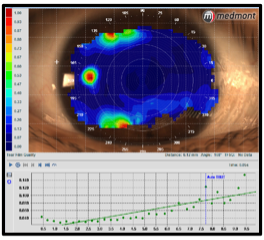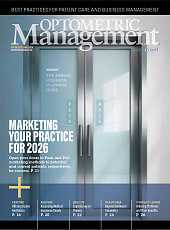Dry eye disease (DED) and orthokeratology (ortho-k) are two significant topics in pediatric eyecare that have garnered increasing attention over recent years. Both DED and ortho-k affect not only affect children's vision but also their overall quality of life. And they are not mutually exclusive: DED can affect the success of contact lens wear, and contact lens wear, including ortho-k, may contribute to DED. This article aims to delve into the nature of dry eye and its causes and symptoms. It will also explore the role of ortho-k in managing vision problems and its potential implications for DED.
DED is a multifactorial condition characterized by a deficiency in the quantity or quality of tears, leading to ocular surface damage and discomfort. While DED is more commonly associated with adults, particularly the elderly, its incidence in children is on the rise due to increased screen time and environmental factors. Ortho-k, on the other hand, is a non-surgical procedure involving the use of specially designed contact lenses to temporarily reshape the cornea and correct refractive errors such as myopia. Both conditions have unique implications for pediatric parents and require careful consideration and intervention.
Understanding DED in Children
Causes and Risk Factors
The causes of DED in children can be diverse and multifaceted. Some of the primary factors include:
- Increased screen time
- Environmental factors
- Allergies
- Contact lens use
- Systemic conditions
Symptoms and Diagnosis
Children with DED may exhibit a range of symptoms, including:
- Redness and irritation
- Burning or stinging sensation
- Intermittent blurry vision
- Excessive tearing (a reflex response to dryness)
- Discomfort with contact lenses
Diagnosing DED in children can be challenging due to their difficulty in articulating symptoms. Meibography (Figure 1a), tear breakup time (TBUT, Figure 1b), Schirmer's test, and ocular surface staining are all objective tests used to diagnose dry eye.


Treatment Options
Managing DED in children involves a combination of lifestyle modifications and medical interventions:
- Environmental adjustments
- Artificial tears
- Allergy management
- Proper contact lens use
- Prescription medications
Ortho-k and Its Role in Pediatric Eye Care
What Is Ortho-k?
Ortho-k involves the use of specially designed gas-permeable contact lenses that are worn overnight to reshape the cornea temporarily. This reshaping corrects refractive errors, allowing for clear vision during the day without the need for glasses or contact lenses. Ortho-k has gained popularity as a non-invasive method to manage myopia progression in children.
Ortho-k offers several advantages for pediatric parents, including slowed axial elongation, improved vision quality, and convenience. Ortho-k’s impact on DED in children requires careful consideration of lens wear and the tear film, as overnight lens wear can affect the tear film and ocular surface, potentially exacerbating dry eye symptoms if not managed properly. Maintaining proper lens care and hygiene are crucial to prevent infection and minimize the risk of dry eye. Therefore, regular follow-up visits with an eyecare professional are essential to monitor ocular health and address any dry eye concerns promptly.
DED and ortho-k represent two important aspects of pediatric eye care that require a comprehensive and tailored approach. Understanding the causes, symptoms, and treatment options for DED can help alleviate discomfort and improve the quality of life for affected children. Ortho-k, with its potential to control myopia progression and enhance vision, offers a valuable tool in pediatric eye care. However, it is essential to monitor its impact on tear film and ocular surface health to ensure the overall well-being of young parents. Through vigilant care and appropriate interventions, children can enjoy optimal vision and ocular health.
This editorial content was supported via unrestricted sponsorship




